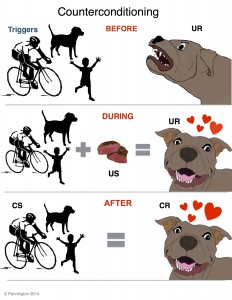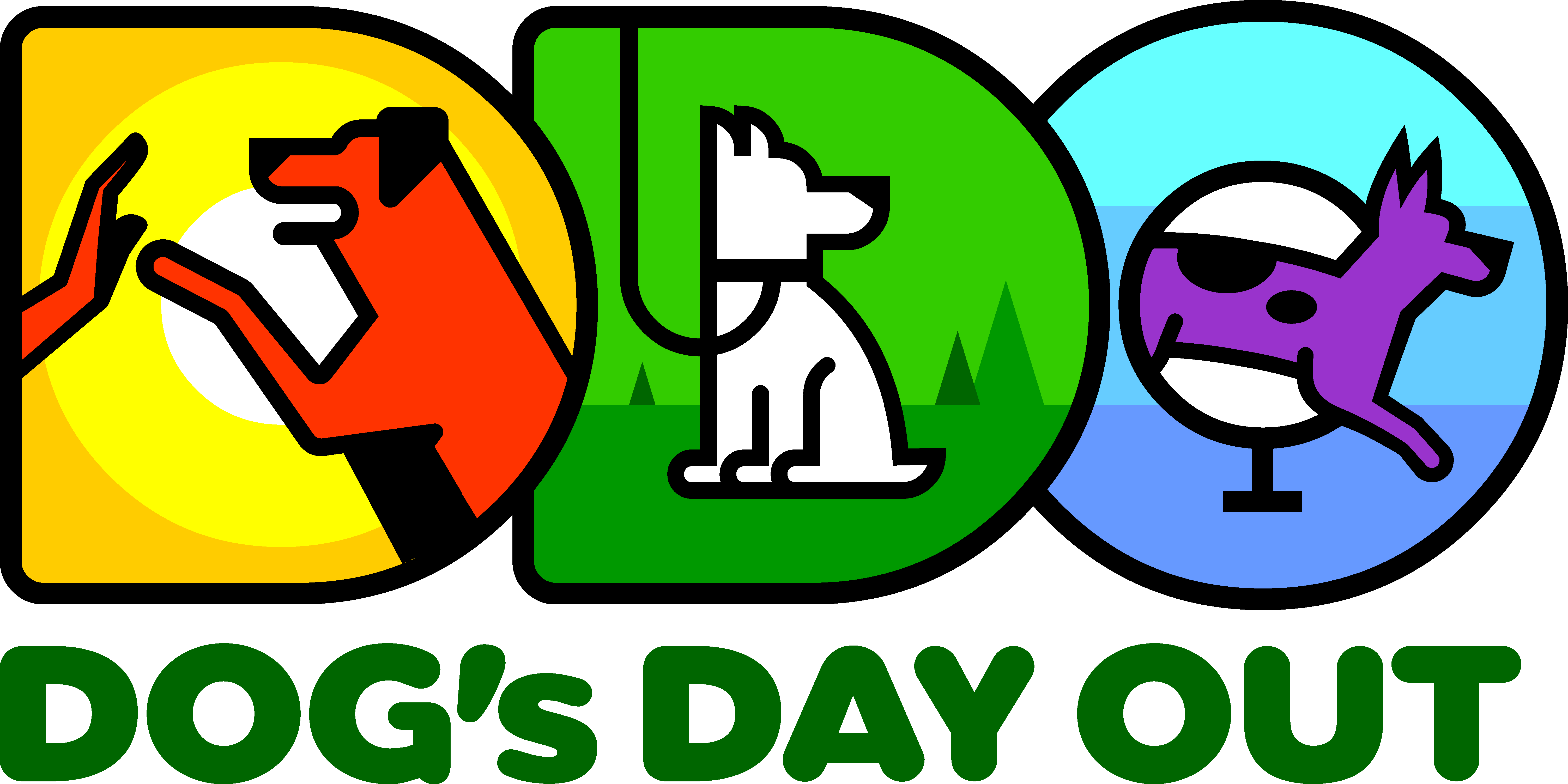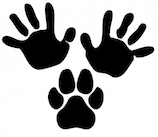Recently, I had three phone calls within a 10-day period from three different families who were looking for immediate help because their dog bit their infant. All of these people were good parents both to their two-legged and four-legged children. They were devastated and frightened and needed help now. None of these folks were bad dog owners or negligent parents but there were definitely some things (“if they had only known”) they could have done with their dogs that could have prevented the bites. I have broken it down into five categories: General Safety/Body Language, Health Care, Desensitization, Exercise and Training. Here’s what I suggest…
In terms of GENERAL SAFETY there are a few things you should know:
- Dogs do not speak a verbal language. Instead they “speak” body language. Because of this, dogs are more sensitive to movement than humans. Babies and children move erratically often making them more problematic to our dogs.
- Dogs dog not bite “out of nowhere.” There are ALWAYS signs prior.
- People (adults & children) are most commonly bitten by a dog in one of three scenarios: the dog is sleeping, eating or cornered. Sleeping and eating are fairly obvious but cornered can take a bit more insight.
- Your dog needs an EXIT ROUTE. Do not trap your dog with his bed between the couch and coffee table without a way to get around an approaching toddler. Dog’s bite when they are cornered and can not escape.
- Parents are told to never leave baby & dog unattended (any dog pushed or cornered can lash out) but what exactly are parents supervising and looking FOR?
- It is imperative that you are able to read your dog’s BODY LANGUAGE/SIGNALS and SIGNS OF STRESS.
- Signs of discomfort can include: a closed mouth, turning away, lip licking, shaking off, yawning, half-moon eye, and breathing changes (panting or holding breath).
- Good resources for BODY SIGNALS include: DDO Body Language, Doggone Safe – Doggonesafe.com, DDO Pinterest Body Language
- Humans show affection by hugging, kissing and patting dogs on the head. Most dogs do not enjoy these behaviors. Some dogs do enjoy these behavior at certain times and from certain people but I do not know any dog who truly enjoys these behaviors ALL the time, from ANYONE.
- Find out if your dog LIKES, TOLERATES or DISLIKES these behaviors, and WHEN, and act accordingly.

- Give your dog his own space that is off limits to baby. A crate or baby gated areas are particularly helpful in a home with children. Make sure your dog has exits away from the baby and is not trapped in a corner.
- Toys – baby & dog toys are similar! Have a toy box for your dog’s toys and get him used to getting his toys from there early on. This helps him differentiate between his toys and the baby’s toys.
When we talk about HEALTH CARE and zoonotic (transferable between dogs and humans) diseases, there are some but luckily, relatively few things that are extremely dangerous. In fact, studies show huge health and behavioral benefits for children living in a home with animals, including fewer allergies.
While there are no poisons in dog’s feces, unless the dog ingested a toxin prior to having the bowel movement, there are certainly good reasons to discourage children from handling dog feces. Here are a few of my suggestions regarding health care:
- De-worm your dog on a regular basis if you are worried about worms (especially if your dog is a “poop eater”)
- Keep baby away from feces. I know this sounds simple but if you don’t already, and your dog poops in your yard, get in the habit of picking up your dog’s poop immediately.
- Don’t let your dog (or baby!) drink standing water. Because of our wet climate, giardia is prevalent in our area.
- Keep your dog healthy and free of fleas and mites. Feed your dog a high quality food, keep him bathed, brushed and flea combed in order to avoid the use of harsh chemicals if possible.
- Although nothing is transmissible here relating to healthcare, do keep your dog’s nails trimmed and filed. Long, raggedy nails can easily scratch a baby.
Now we get to the really important behavioral preparation for your dog and it starts with CLASSICAL CONDITIONING and DESENSITIZATION, preferably before your baby is even born.
- We want to condition the dog to various baby-related stimuli by pairing delicious high value treats (or anything “good” to your dog, whatever that is for your dog, toys and games work for some dogs for this too) with a “scary” stimulus i.e. something that makes your dog nervous or uncomfortable.

There are a few exercises you can do with your dog in order to get him used to the “scary” stimulus of a baby…
- Handling exercises are important to get your dog used to being handled by a baby or small child. You would do this by touching different parts of your dog’s body (touch ears, feet, tails, grab collar etc.) then immediately feeding him delicious treats. Go slowly. The goal is to get your dog comfortable and relaxed while you are doing this; you do NOT want him tense and nervous. If he is, back off and do less until he is comfortable and relaxed with the handling and proceed from there. Keep in mind your dog should not be expected to allow the baby (or anyone) to handle him harshly or when he does not want it (see body language above).
- Desensitize your dog to baby sounds. You can buy/download recorded sounds and gradually expose your dog to these sounds. Sound on = treats abound! Start with a very low volume if your dog is worried about the sounds and then gradually turn up the volume when he is comfortable.
- Desensitize your dog to baby equipment and toys (especially things that move or make noise – swings, strollers, etc.). You do both of these in the same manner as the handling exercise – pair the noise/swing/toys with delicious treats. For example, turn on the musical swing and simultaneously give your dog treats then turn swing off and stop the treats. Repeat, repeat, repeat!
- Desensitize your dog to babies and children – when kids are around so are treats! If you have friends with kids and your dog is now comfortable with a stationary stroller (and comfortable around the child).
When the baby is born everyone’s schedule changes. While your dog may be thrilled that you are now home all the time he may also be missing out on what used to be his daily walk or trip to the park. EXERCISE (both physical and mental) is extremely important to the health of your dog.
- A dog’s exercise requirement depends on his age, breed and current activity level so varies dog to dog. Try not to disrupt his normal exercise routine too much once the baby is here. It won’t always be perfect and the is OK (dogs are adaptable) but doo keep in mind his exercise needs and do what you can to fulfill them.
- Increase MENTAL STIMULATION with food-stuffable toys, puzzles, and easy scent games (think treat hunt out of 4-5 boxes in your living room). There are a ton of ways to do this, starting with simply CREATIVE FEEDING. Click those links for ideas!
- Cash in your favors here. You can only fit so many lasagnas in your freezer (!) so when people ask what they can do for you, have them walk your dog, take him to the park or toss a ball in the backyard.
- If your dog doesn’t walk well on the leash before the baby arrives work on teaching your dog to walk on a loose leash NOW and if he shows reactive behaviors on leash (barking, lunging) Look Here! If you need to, add a dog training class to your list of pre-baby classes you need to take.
- Once the baby arrives you will need to know how to walk with baby in tow:
- There are many safe and gentle equipment options out there now that can be a huge help when juggling walking with a dog and baby. Head collars and harnesses are helpful.
- Baby wearing, or carrying the baby in a body carrier instead of using stroller can make the walk quite pleasant while baby is small.
Now that we have your home prepared and your dog desensitized, let’s get him in proper working order! There are some very simple and specific cues (BASIC TRAINING) that are extremely helpful and can make your life much easier once baby is here:
- Stationary cues (you are simply controlling your dog’s body in the environment). These cues consist of: Sit, Down, Stay and Wait (especially important when off-leash, getting ready & out of the door). These are very simple skills but you can never do too many of them. If your dog has truly mastered just these four cues you will have excellent skills to call upon when needed.
- Wait can be a lifesaver when your hands are full and your dog is not on leash. “Wait” is simply not allowing your dog to move forward. It is different than stay in that we do not care what position the dog is in (standing, sitting, lying down), we just do not want him to proceed forward. The hand signal for wait is a flat hand (stop sign) in front of your dog’s face. As with “sit” and “down” your dog should wait until you release him with the release command “ok”. Practice “wait” going in/out of all doorways, crate, and especially the car.
- Teach your dog not to jump up and work on other attention seeking behaviors. Pre-baby is definitely the time to IGNORE these behaviors and teach alternate behaviors (for example: “sit” for greeting instead of jumping up).
- Teach your dog to “go to your mat/bed/kennel” Also, be sure to give your dog a safe space (a crate is great) that is off limits to baby!
- Teach your dog “leave it” (item not yet in his mouth), and “drop” (to release something already in his mouth)
- Around, Back up, on and off are also useful cues.
- Walking on a loose-leash
- If needed, enroll in a good Basic Obedience class while you still have the time (and energy)!
Seeing your beloved dog and your new baby live and grow together is an awesome thing – get prepared, be safe and ENJOY IT!
RESOURCES:
Take the Barks & Babes class at Dog’s Day Out!


